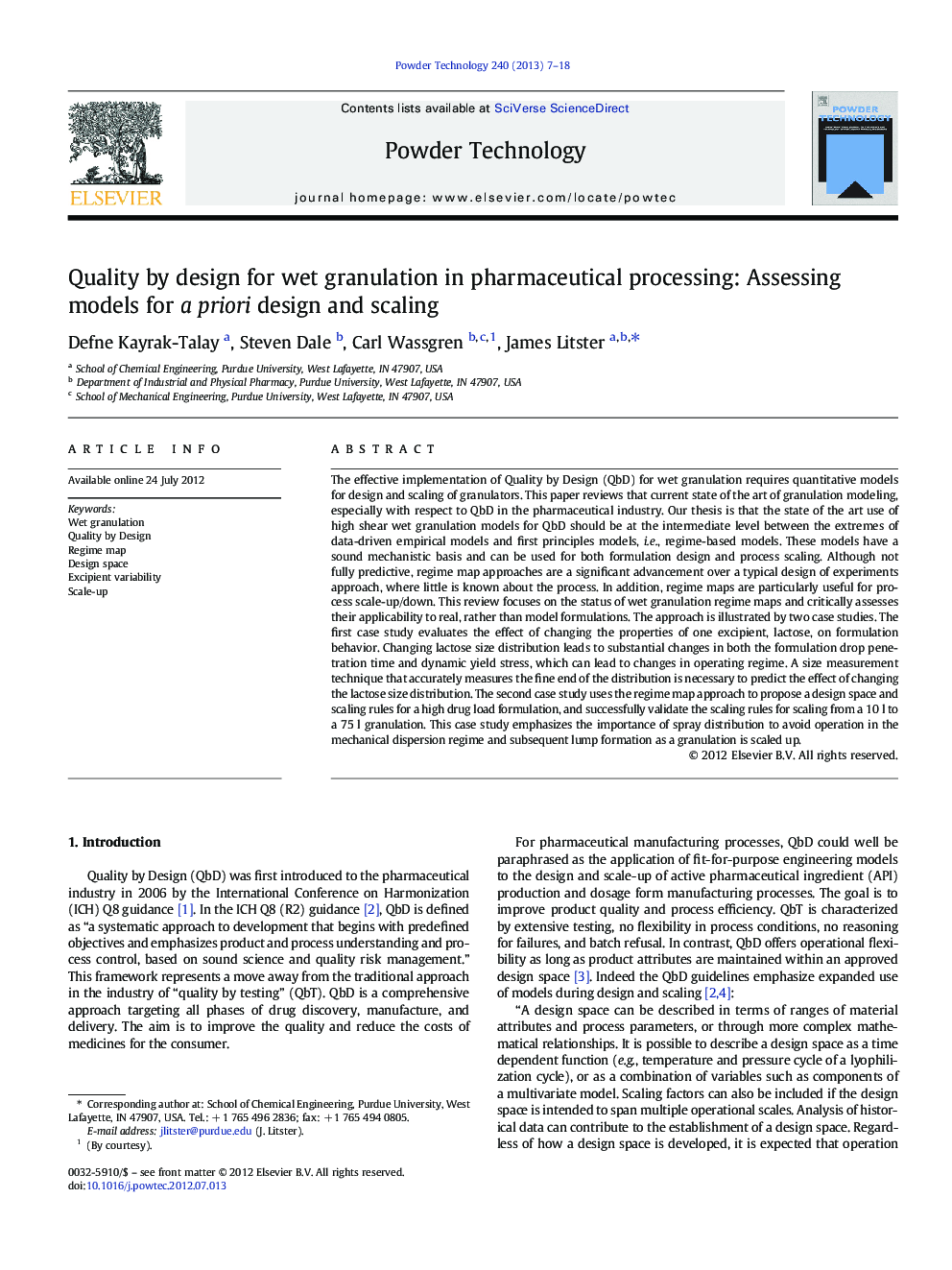| کد مقاله | کد نشریه | سال انتشار | مقاله انگلیسی | نسخه تمام متن |
|---|---|---|---|---|
| 236526 | 465675 | 2013 | 12 صفحه PDF | دانلود رایگان |

The effective implementation of Quality by Design (QbD) for wet granulation requires quantitative models for design and scaling of granulators. This paper reviews that current state of the art of granulation modeling, especially with respect to QbD in the pharmaceutical industry. Our thesis is that the state of the art use of high shear wet granulation models for QbD should be at the intermediate level between the extremes of data-driven empirical models and first principles models, i.e., regime-based models. These models have a sound mechanistic basis and can be used for both formulation design and process scaling. Although not fully predictive, regime map approaches are a significant advancement over a typical design of experiments approach, where little is known about the process. In addition, regime maps are particularly useful for process scale-up/down. This review focuses on the status of wet granulation regime maps and critically assesses their applicability to real, rather than model formulations. The approach is illustrated by two case studies. The first case study evaluates the effect of changing the properties of one excipient, lactose, on formulation behavior. Changing lactose size distribution leads to substantial changes in both the formulation drop penetration time and dynamic yield stress, which can lead to changes in operating regime. A size measurement technique that accurately measures the fine end of the distribution is necessary to predict the effect of changing the lactose size distribution. The second case study uses the regime map approach to propose a design space and scaling rules for a high drug load formulation, and successfully validate the scaling rules for scaling from a 10 l to a 75 l granulation. This case study emphasizes the importance of spray distribution to avoid operation in the mechanical dispersion regime and subsequent lump formation as a granulation is scaled up.
This study reviews the status of wet granulation regime maps and critically assesses their applicability to real, rather than model formulations. The steps for using the regime map approach for QbD are outlined. Two case studies demonstrate how to utilize regime maps for a priori performance prediction when there is a change in excipient grade and when scaling-up.Figure optionsDownload as PowerPoint slideHighlights
► Regime-based models are assessed for two pharmaceutical formulations.
► Small scale tests are used to determine the manufacturing behavior of formulations.
► Differences in d3,2 (> 5 µm) increases the probability of nucleation regime change.
► Decrease in particle size (higher Stdef) indicates a change in the granule growth.
► Doubling ψ during scale-up results in wider granule size distribution.
Journal: Powder Technology - Volume 240, May 2013, Pages 7–18